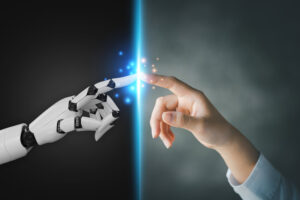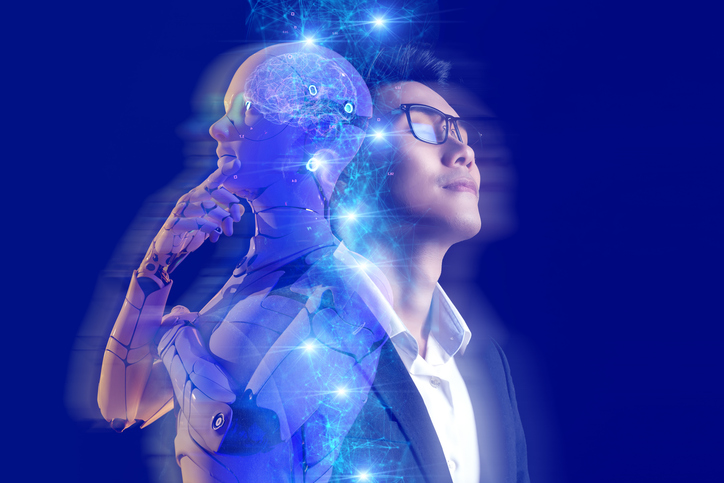Automation isn’t just the future—it’s already here. From AI writing emails to bots managing logistics, organizations across industries are racing to automate. But the big question remains: are we better off letting machines drive outcomes, or do humans still outperform in certain areas?
The truth isn’t simple. Automation is powerful, but humans bring depth, nuance, and resilience that algorithms can’t always replicate. Let’s dig into five core areas—efficiency, decision-making, customer experience, creativity, and adaptability—to see where the balance lies.
1. Efficiency: Why Automation Wins, But Not Always
When it comes to speed and repetition, machines are unstoppable. They can process millions of transactions per second, update databases without error, and run 24/7 without fatigue. In fields like logistics and finance, this translates into reduced costs, faster response times, and fewer human mistakes.
But efficiency isn’t just about speed—it’s about impact. A warehouse robot might move boxes quickly, but if the system isn’t designed to adjust for sudden changes (say, a snowstorm delaying trucks), efficiency becomes fragile. True efficiency is sustainable, flexible, and scalable. That’s where humans step in, bridging the gap between speed and context.
💡 Here’s a takeaway: Automation delivers efficiency at scale, but humans make efficiency resilient. Without human oversight, “efficient” processes can collapse under real-world variability.
2. Decision-Making: Numbers Speak, but Stories Matter
Consider this scenario: an algorithm reviews hundreds of job applications in minutes, filtering candidates based on education, keywords, and past experience. Objectively, this looks efficient. But what about the applicant who learned coding through self-study, built a portfolio, and thrived in nontraditional roles? The algorithm may never see their potential.
This is the heart of human decision-making. While automation is unmatched at analyzing quantitative data, it struggles with qualitative nuance. Humans, on the other hand, bring lived experience, intuition, and ethical judgment.
🔎 The balance looks like this:
-
Automation: Identifies trends, crunches probabilities, highlights anomalies.
-
Humans: Interpret meaning, weigh consequences, consider fairness and ethics.
-
Best outcomes: When machines flag possibilities and humans decide directions.
This isn’t just theory. Hospitals use AI to detect early signs of diseases like cancer, but doctors remain critical for interpreting those results within a patient’s full medical history. The partnership ensures decisions are fast and empathetic.

3. Customer Experience: Automation for Speed, Humans for Trust
Let’s break it down in plain terms: customers don’t just want problems solved, they want to feel understood.
Automation is great at solving:
-
Tracking an order.
-
Resetting a password.
-
Providing store hours.
-
Handling simple FAQs.
But when emotions rise—lost luggage, a hacked account, a denied insurance claim—empathy becomes the currency of trust. A chatbot might apologize, but it can’t mean it. Humans can listen, calm frustrations, and resolve situations in ways a script can’t anticipate.
Here’s the kicker: the companies winning today aren’t choosing between humans and machines—they’re blending them. For example, airlines now use automation to handle common service requests instantly, while reserving human agents for complex or sensitive cases. This hybrid model not only improves efficiency but also deepens loyalty, because customers know there’s a real person when it matters most.
4. Creativity: Machines Replicate, Humans Originate
Automation is excellent at remixing. Feed an AI thousands of design samples, and it can spit out new logos, website layouts, or even music tracks. But let’s be clear: remixing isn’t the same as inventing.
Think about groundbreaking innovations—the Wright brothers imagining powered flight, or Pixar reinventing storytelling with computer animation. Those leaps weren’t the result of more data. They came from human imagination colliding with risk-taking.
That said, automation is still a powerful creative partner. Here’s how the relationship often plays out:
| Automation Does Well | Humans Do Well |
|---|---|
| Generate endless variations | Identify which one “feels right” |
| Suggest based on past data | Break patterns and rules |
| Speed up production | Inspire new directions |
Creativity is one of humanity’s sharpest competitive edges. Machines can amplify it, but they can’t replace it.
5. Adaptability: Humans Thrive in Chaos
Here’s where humans shine most: when things don’t go according to plan.
Automation thrives in stable environments with predictable inputs. But what happens when the world changes overnight? A pandemic, a sudden regulatory shift, or a disruptive competitor can throw carefully automated systems into disarray.
Take the supply chain crises of recent years. Many automated systems optimized for efficiency failed when ports closed, demand spiked unpredictably, or suppliers went offline. It wasn’t the algorithms that found new solutions—it was humans who improvised, sourced alternatives, and built new strategies.
This adaptability is rooted in human traits machines can’t replicate: curiosity, resilience, and the ability to make sense of incomplete information. Machines need rules; humans can thrive in their absence.
Wrapping It Up
So, do humans drive better outcomes? The short answer: not always—but often in ways that matter most. Automation wins in speed, accuracy, and scale. But humans lead in empathy, adaptability, and true innovation.
The real magic happens when the two don’t compete, but collaborate. Automation should free humans from repetitive tasks, while people focus on judgment, creativity, and leadership. Organizations that master this balance won’t just work faster—they’ll work smarter, more humanely, and more resiliently.
And that’s the future worth building: machines that run the systems, and humans who drive the vision.




